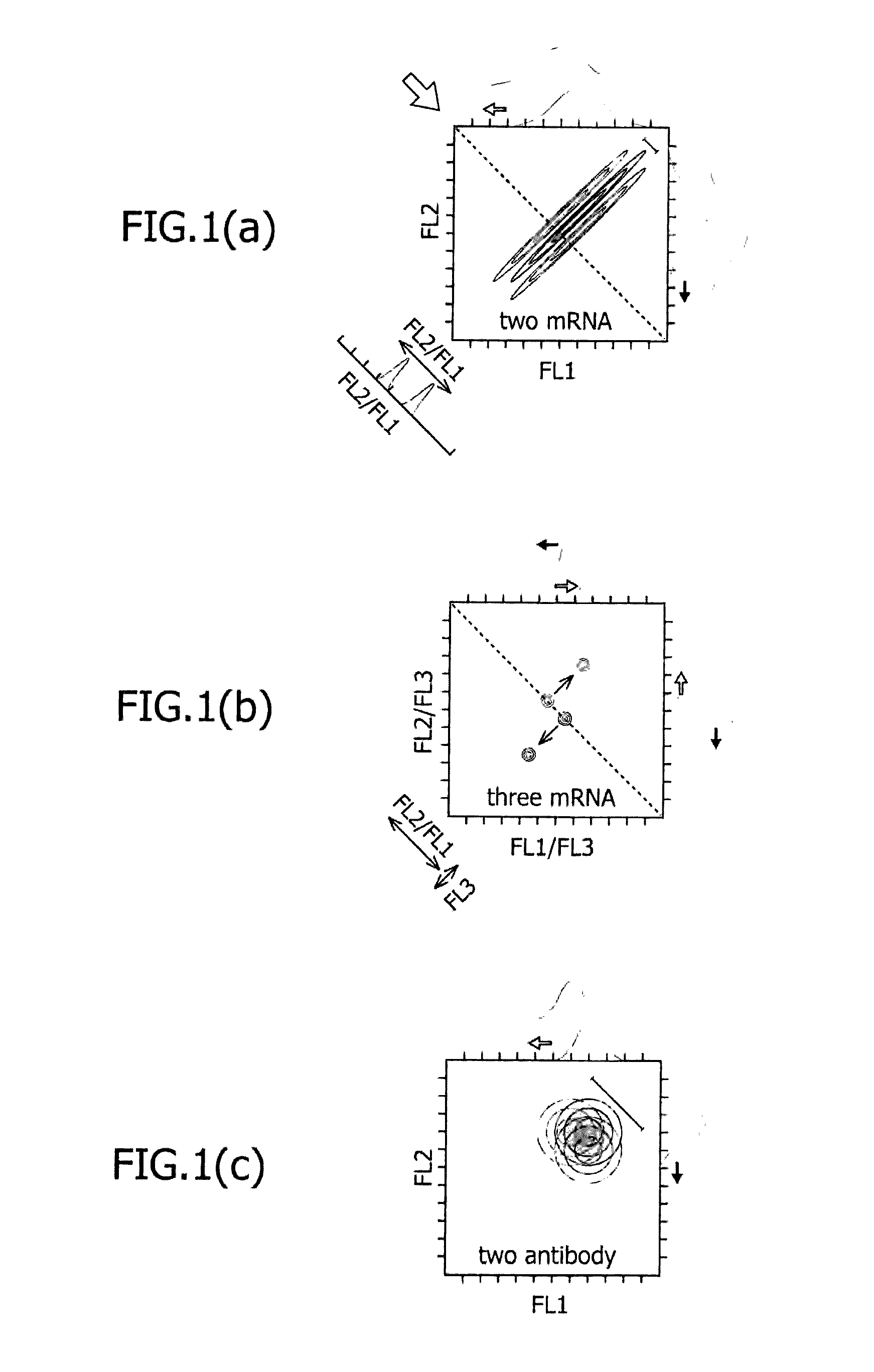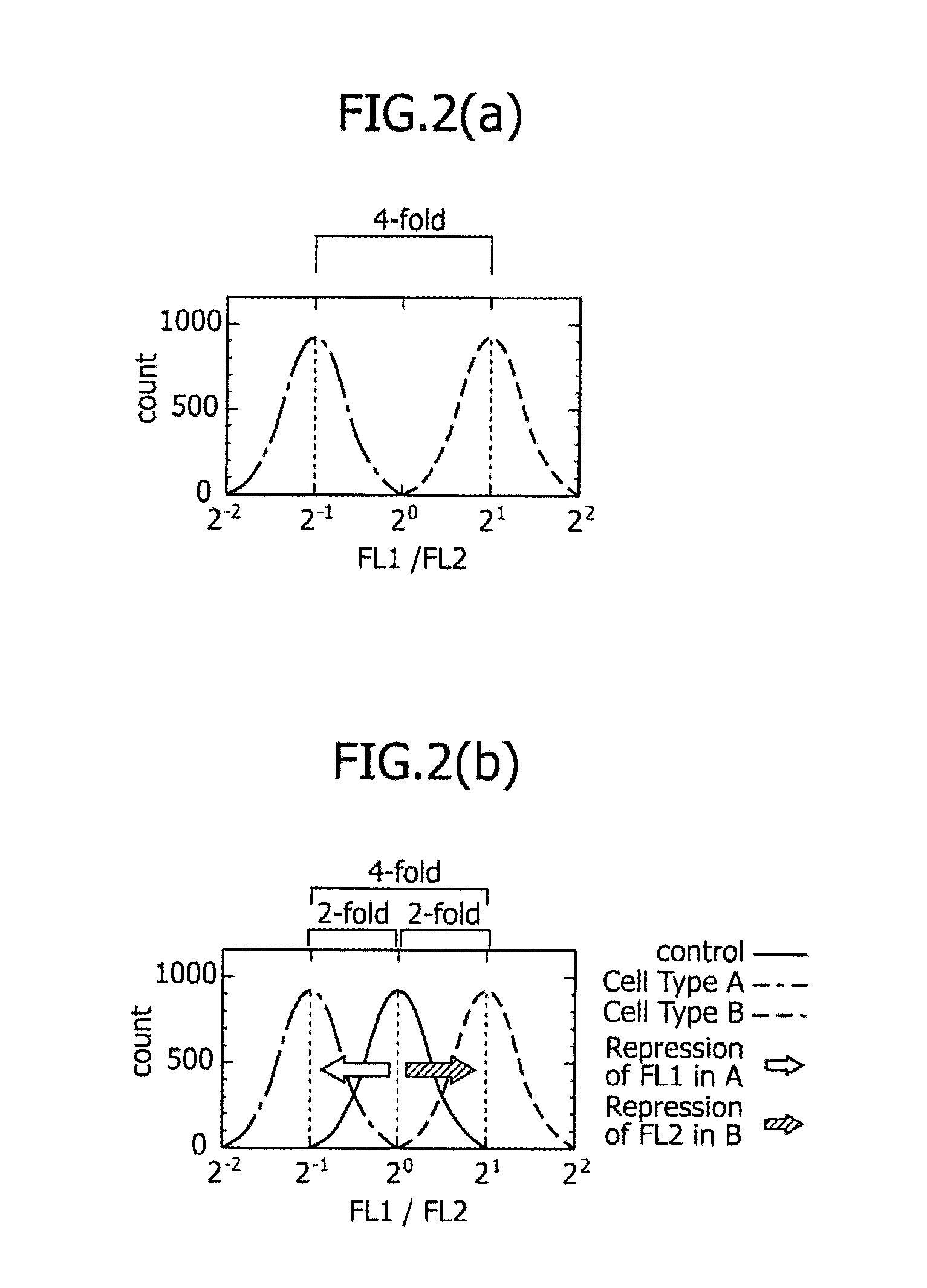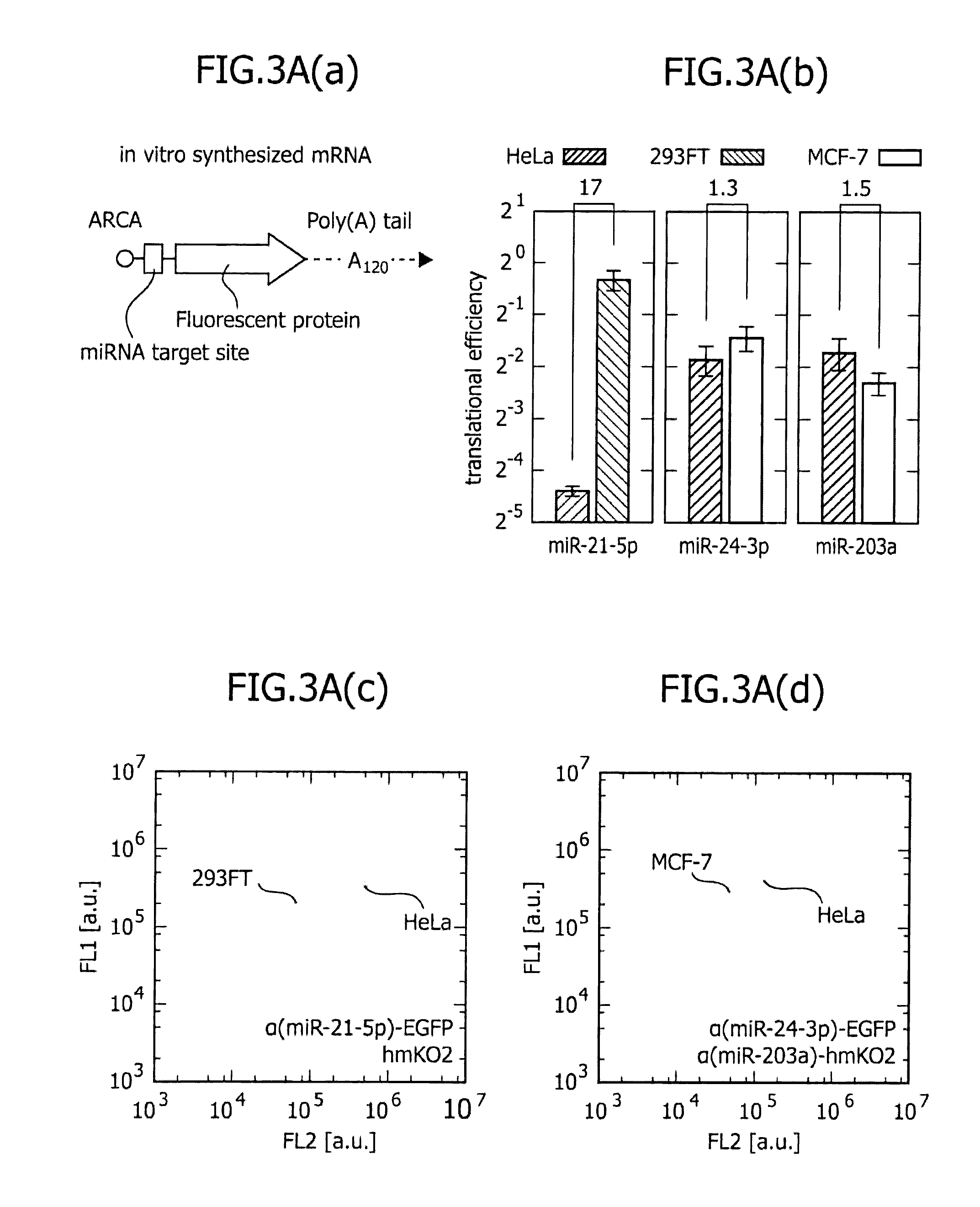METHOD FOR DETERMINING DESIRED CELL TYPE USING EXPRESSION OF miRNA AS INDICATOR
- Summary
- Abstract
- Description
- Claims
- Application Information
AI Technical Summary
Benefits of technology
Problems solved by technology
Method used
Image
Examples
example 1
One-Dimensional Separation of Existing Cell Lines, Using miRNA-Responsive Reporter mRNA
[0119]One-dimensional separation of existing cell lines was carried out using one or two types of miRNA-responsive reporter mRNAs, The results are shown in FIG. 3. FIG. 3(a) is a schematic view showing in vitro synthesized miRNA-responsive reporter mRNA used in the present Example. In the direction from the 5′-terminus on the left side to the 3′-terminus on the right side on the paper, ARCA (gap structure analog), a miRNA target sequence, a gene encoding a fluorescent protein, and poly(A) tail are positioned. The ARCA, the miRNA target sequence, and the initiation codon were designed, such that the ARCA could be separated from the miRNA target sequence by approximately 20 nucleotides, and the miRNA target sequence could also be separated from the initiation codon by approximately 20 nucleotides.
[0120]FIG. 3(b) is a graph showing a comparison in translational efficiency, when three types of miRNA-r...
example 2
Cell Separation in a Higher-Dimensional Space
[0124]Cell separation was carried out using three types of or four types of miRNA-responsive reporter mRNAs. First, three types of miRNA-responsive reporter mRNAs, α(miR-34-3p)-EGFP, α(miR-127-3p)-EGFP (SEQ ID NO: 7), α(miR-17-5p)-EGFP (SEQ ID NO: 9) and α(miR-92a-3p)-EGFP (SEQ ID NO: 15), where measured in terms of translational efficiency in HeLa, 293FT, and MCF-7 cells. The results are shown in FIGS. 4(a) and (d). The numerical value at the top of each column indicates the translational efficiency ratio of two types out of the three types of cell lines. The error bars each indicate a mean value±standard deviation (n=3).
[0125]The results obtained by performing two-dimensional separation using three types of miRNA-responsive reporter mRNAs (α(miR-24-3p)-hmAG1 (SEQ ID NO: 4), α(miR-127-3p)-hmKO2 (SEQ ID NO: 8) and α(miR-17-5p)-tagBFP (SEQ ID NO: 13)) are shown in FIG. 4(b). Three types of miRNA-responsive reporter mRNAs were each independ...
example 3
Insertion of miRNA Target Sequence and Translational Efficiency
[0130]The position of a miRNA target sequence in reporter miRNA-responsive reporter mRNA was examined. That is, miRNA-responsive reporter mRNA (α(miR-21-5p)-EGFP (SEQ ID NO: 1)) in which one perfect complementary sequence of miR-21-5p that is the target site of miR-21-5p is present in the 5′UTR, and miRNA-responsive reporter mRNA (EGFP-4xα(4xmiR-21-5p) (SEQ ID NO: 2)) in which four perfect complementary sequences of miR-21-5p are present in the 3′UTR, were prepared. The thus prepared mRNAs were examined in terms of translational efficiency. Likewise, miRNA-responsive reporter mRNA (α(miR-17-5p)-EGFP (SEQ ID NO: 9)) in which one perfect complementary sequence of miR-17-5p that is the target site of miR17-5p is present in the 5′UTR, and miRNA-responsive reporter mRNA (EGFP-4xα(4xmiR-17-5p) (SEQ ID NO: 10)) in which four perfect complementary sequences of miR-17-5p are present in the 3′UTR, were prepared. The thus prepared ...
PUM
| Property | Measurement | Unit |
|---|---|---|
| Level | aaaaa | aaaaa |
Abstract
Description
Claims
Application Information
 Login to View More
Login to View More - R&D Engineer
- R&D Manager
- IP Professional
- Industry Leading Data Capabilities
- Powerful AI technology
- Patent DNA Extraction
Browse by: Latest US Patents, China's latest patents, Technical Efficacy Thesaurus, Application Domain, Technology Topic, Popular Technical Reports.
© 2024 PatSnap. All rights reserved.Legal|Privacy policy|Modern Slavery Act Transparency Statement|Sitemap|About US| Contact US: help@patsnap.com










